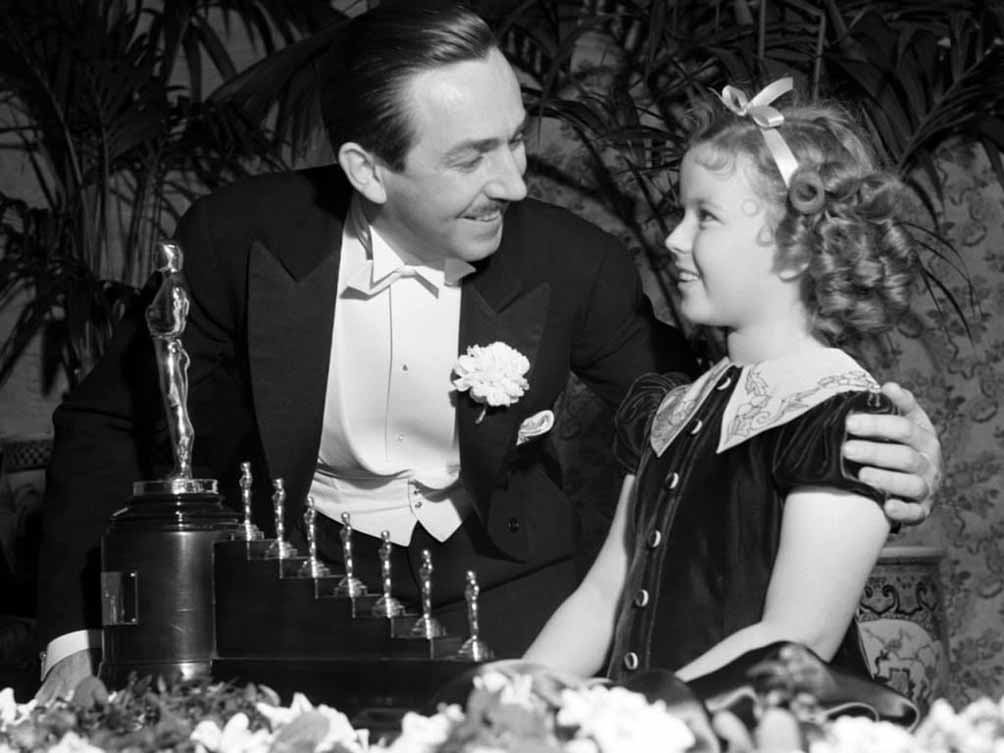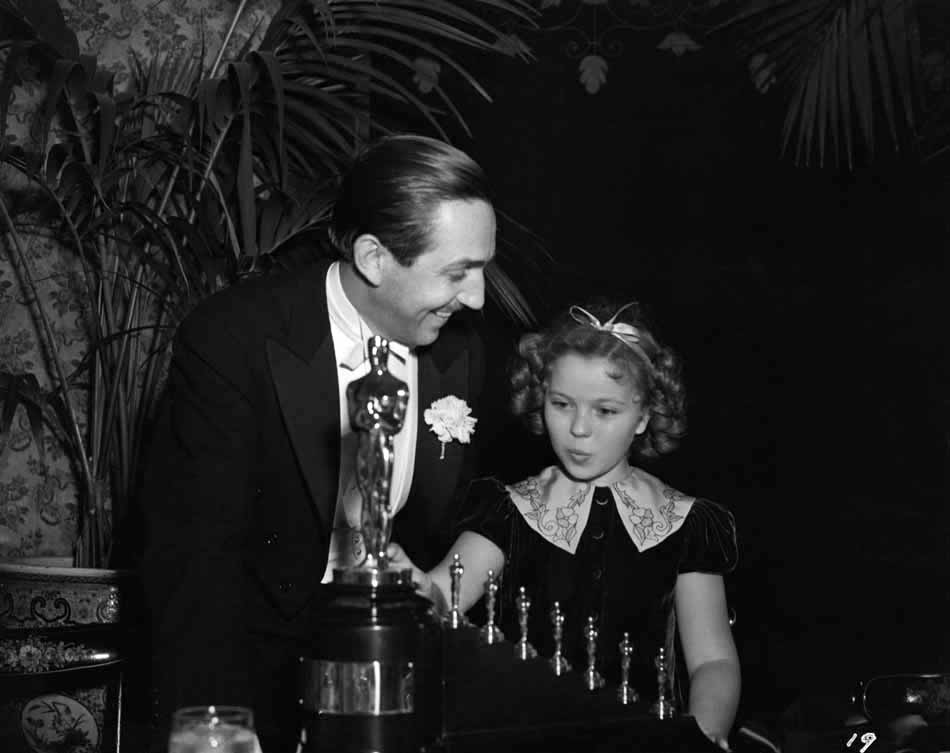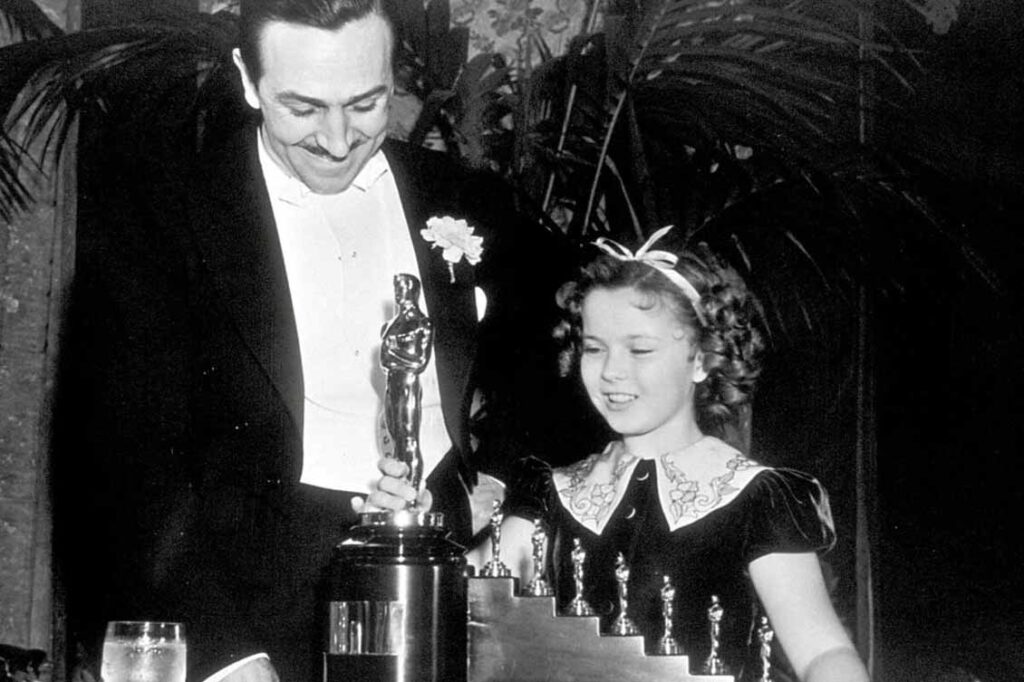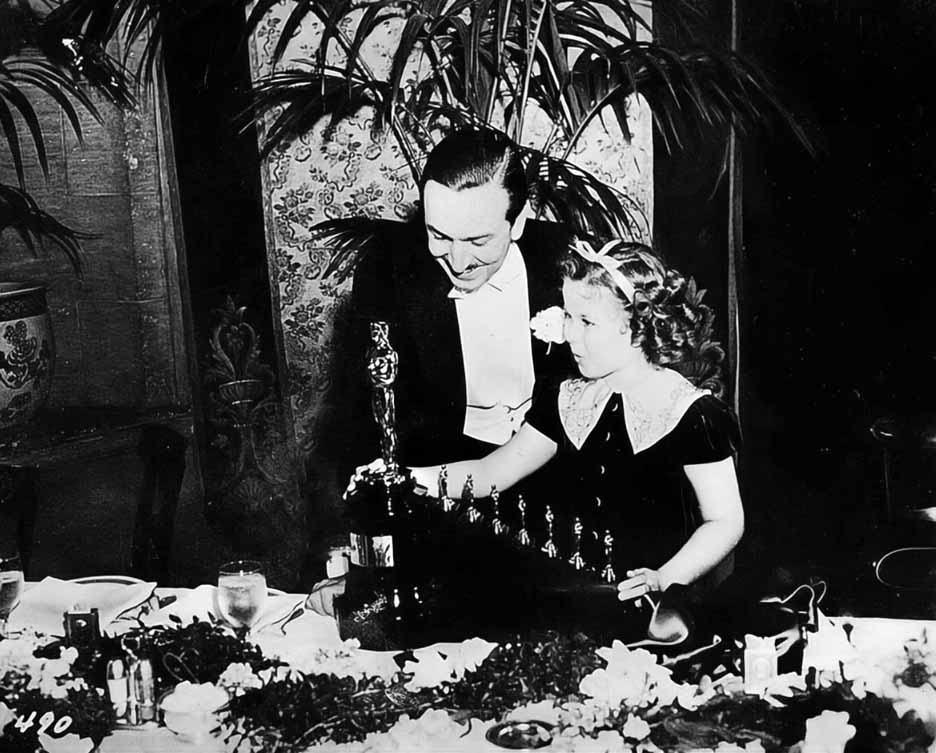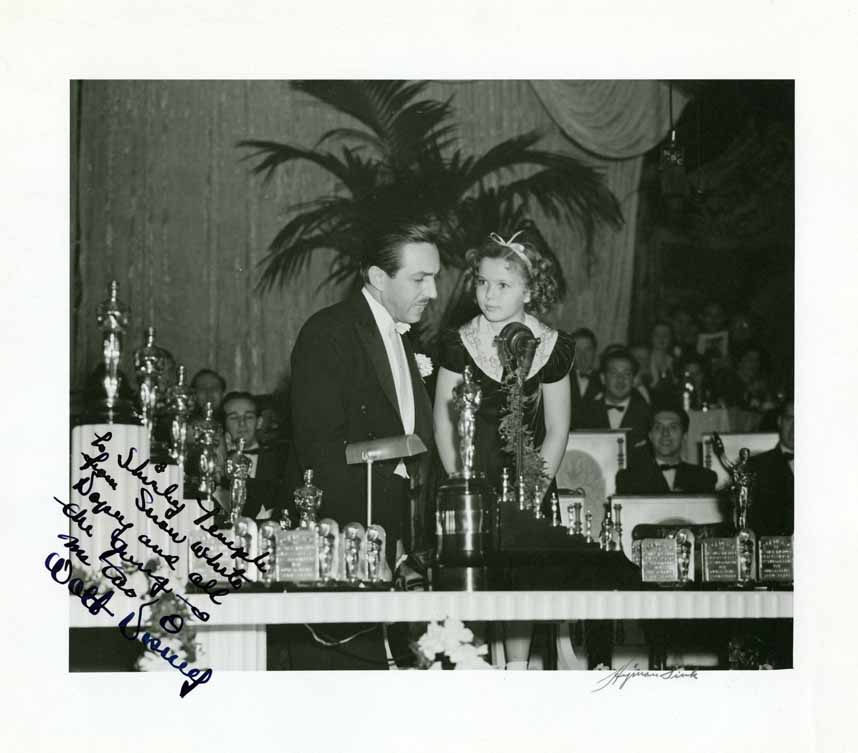The Academy Awards honored Snow White and the Seven Dwarfs several times.
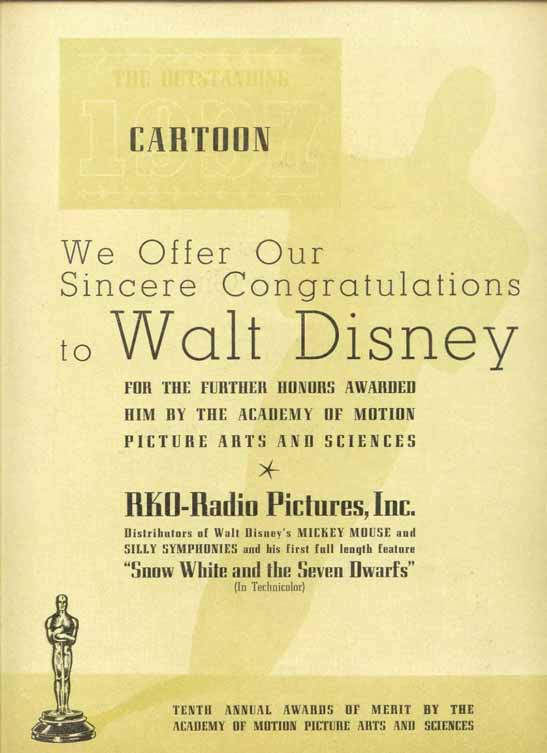
March 10, 1938
According to the oscars.org website, the 10th Academy Awards which took place at the Biltmore Bowl of the Biltmore Hotel on March 10, 1938 honored Leigh Harline as head of department of music with a nomination for best music (scoring) for Snow White and the Seven Dwarfs. He lost to Charles Previn, for the film One Hundred Men and a Girl, a forgotten film with not even a composer credited, which used mostly classical music in its score. Snow White appeared in no other category. The presence of a color home movie of that year’s ceremony in Art Babbitt personal belongings suggests that the crew was present in the audience, probably hoping for a better recognition, although Walt Disney did win the best cartoon award for his Silly Symphony The Old Mill.
February 23, 1939
The film premiered in 1937, but the general release was in 1938. Surprisingly, since a film is supposed to run once according to its release date, the 11th ceremony, held in the same venue on February 23, 1939, was actually Walt Disney’s big night for Snow White. It seems indeed that the Academy did not quite know what to do with this new type of feature. Walt Disney had been honored many times before in a category almost created for him: the cartoon short subject. As a matter of fact, out of the 5 nominees in this category that year, 4 films were from his studio, and the winner was Ferdinand the Bull. Putting cartoons in a special category meant they didn’t overshadow classic productions. And it is probable that it was felt that these did not stand a chance opposite Walt Disney’s one-reel wonders.
A feature cartoon posed the same problem, with much larger consequences. Luckily, it was still an oddity, since it was the only one that had been released in 1938. The release of Dave Fleischer’s Gulliver’s Travels had only just happened at the time of the ceremony and could therefore only run in the following year’s ceremony, where it lost the two awards it was nominated for.
Could Hollywood afford to eclipse the music or the editing of The Adventures of Robin Hood, or the songs of Alexander’s Ragtime Band, or the direction of You Can’t take it With You or the cinematography of The Great Waltz?
So what’s the answer? The solution was a special award for Walt Disney and special statuette of one regular Oscar and seven little ones with a plaque saying: “for Snow White and the Seven Dwarfs, recognized as a significant screen innovation which has charmed millions and pioneered a great new entertainment field for the motion picture cartoon.” No competitors, no losers, everyone is happy. The statuette was handed to Walt Disney by superstar Shirley Temple before the cameras:
Shirley Temple: “I’m sure the boys and girls of the whole world are going to be very happy when they find out that the daddy of Snow White and the Seven Dwarfs, Ferdinand, Mickey Mouse and all the others is going to get this beautiful statue. (She unveils it). Isn’t bright and shiny?”
Walt Disney: “Oh it’s beautiful!”
Shirley Temple: “Aren’t you proud of it, Mr. Disney?”
Walt Disney: “I’m so proud, I’ll think I’ll bust!” (She giggles) You know I think that Mickey Mouse, Ferdinand, Snow White and all the dwarfs are going to be very proud that you presented it.”
Shirley Temple: “I’m glad.”
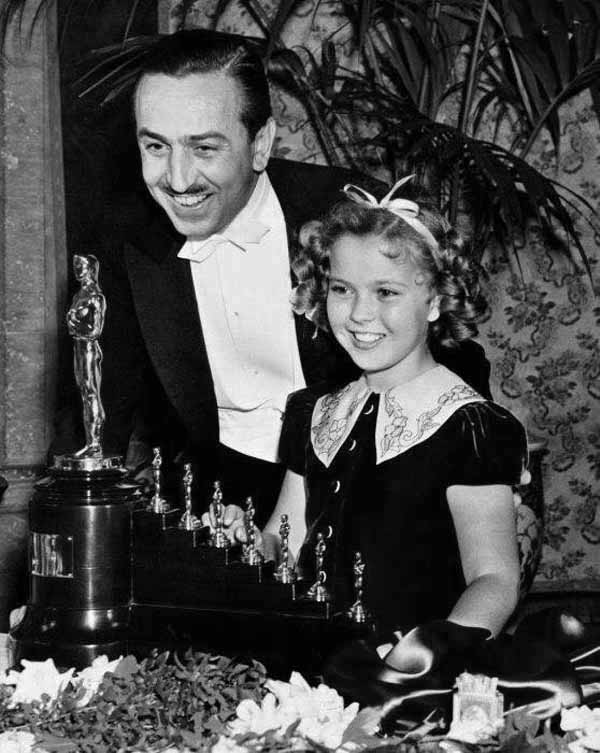
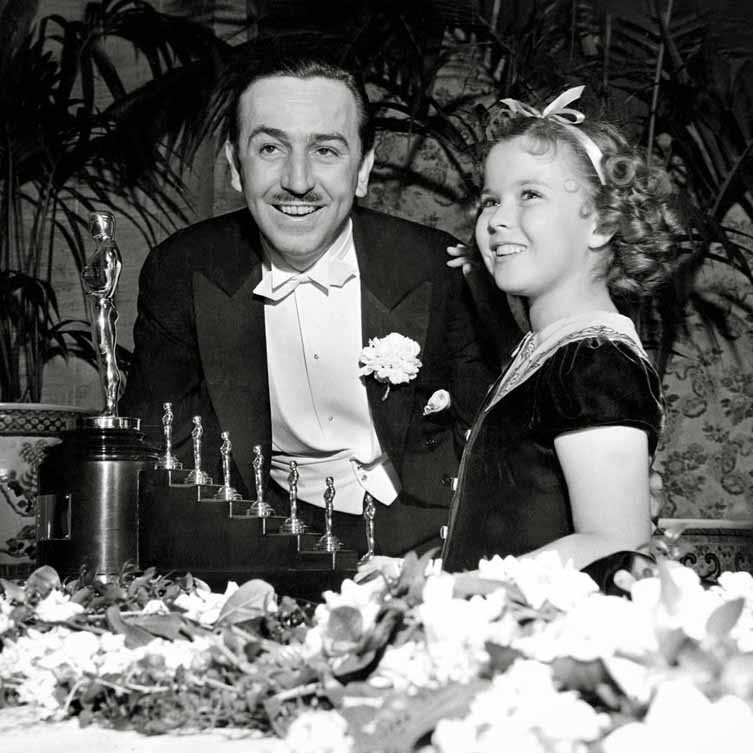
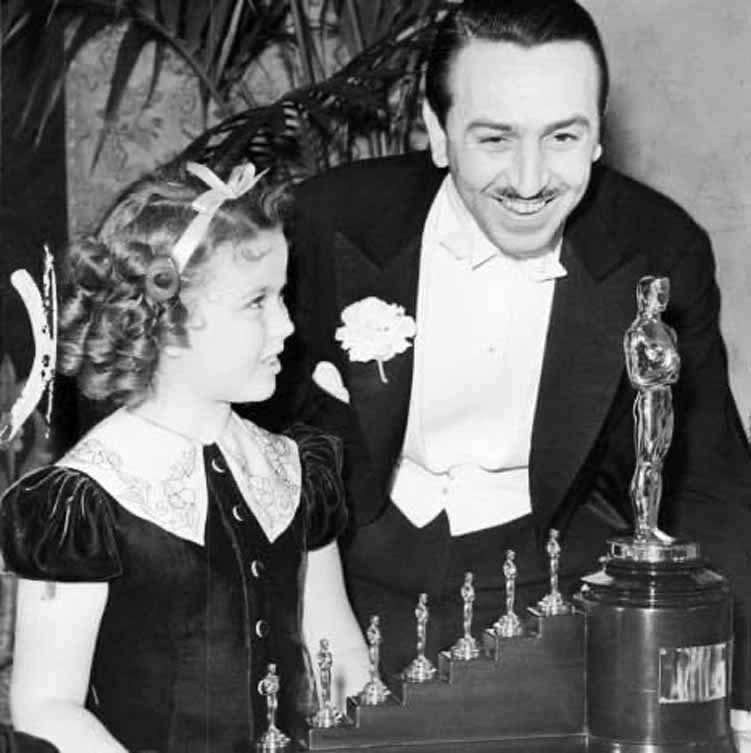
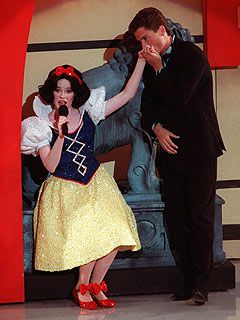
March 29, 1989
For the 61st Academy Awards ceremony, the film Who Framed Roger Rabbit?, where Snow White made a cameo appearance, won several awards. But the opening number featuring Snow White and Rob Lowe, received heavy criticism. The Hollywood Reporter called it “disastrous”. Producer Alan Carr wanted to import a number from the show Beach Blanket babylon and brought in Eileen Bowman to play Snow White. Frank Wells, at the time Chief Operating Officer at Disney, complained that the studio’s version of the character was used without its approval, especially because the commercial break right after the parody was Chevy commercial featuring Disneyland’s Snow White coming out of a Chevy.
A few weeks after the show, a sex tape surfaced with Rob Lowe, which was the final nail in the coffin of this scandalous affair.
Bruce Vilanch interview
Rob Lowe interview
The opening number
March 29, 1993
Four years after the Snow White fiasco, the character was brought back, this time in animated form, to present the Academy Award for best achievement in animated Short Film. She wears a white dress reminiscent of the ball gown Belle wears in Beauty and the Beast, which had been honored the previous year.
The uncredited voice actress for this appearance was Mary Kay Bergman, who took on the role from that point on.

